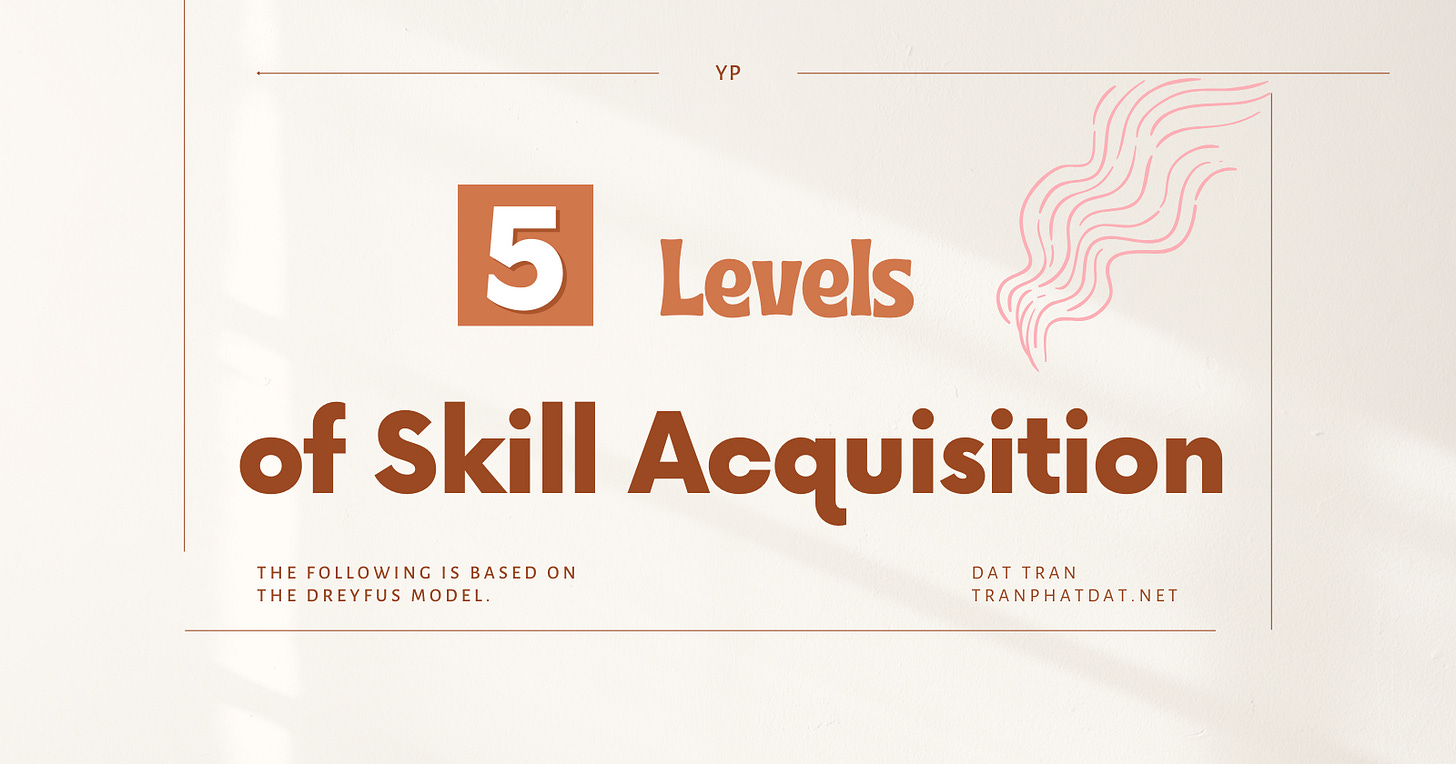The Dreyfus Model of Skill Acquisition
The Five Steps to Expert Learning
Find out the five stages that people go through as they learn new skills.
This is why the Dreyfus Five-Stage Model of Adult Skill Acquisition is useful for training and development. It identifies five different stages that people go through as they learn new skills.
About the Model
The Dreyfus Model of Skill Acquisition was developed in 1980 by Stuart and Hubert Dreyfus through their research at the University of California, U.S.
It illustrates five stages of learning that people go through when they acquire new skills. As a person progress through the stages, his or her ability with the skill increases.
These stages are:
Novice.
Advanced Beginner.
Competent.
Proficient.
Expert.
In other word, the 5 Skill Levels as You Learn Something New are:
1) Newbie/Rookie - You're just getting started and learning the basics. Things are still pretty confusing and you follow instructions carefully.
2) Apprentice - You're getting the hang of it now. You recognize some patterns and shortcuts but still need some help with tricky parts.
3) Journeyman - You're getting pretty good at this! You can plan your work and see how things connect. But new situations still throw you for a loop sometimes.
4) Pro - Now you've got a good grasp on the big picture. You can adapt your plans as needed and tackle most challenges. Though you're not super fast or flexible yet.
5) Master - You're an expert now! It all comes naturally and you can recognize complex patterns at a glance. You can troubleshoot anything and come up with innovations.
Here are some examples of the 5 skill levels in the Dreyfus Model:
1) Newbie/ Rookie
A new software developer who is just learning the basics of HTML, CSS and JavaScript. They are still struggling to understand syntax and how to structure code.
2) Apprentice
A junior developer who has been coding for 1-2 years. They can build simple web applications with guidance but get stuck on complex problems.
3) Practitioner
A mid-level developer who has 3-5 years of experience. They can independently build web applications and debug most issues but still consult others on complex architectural decisions.
4) Proficient
A senior developer with 7-10 years of experience. They understand the big picture of applications, can mentor junior developers and optimize code for performance. However, they still rely on best practices rather than true intuition.
5) Expert/Master
A principal developer or tech lead with over 10 years of experience. They have an intuitive understanding of code, can easily spot issues and come up with innovative solutions. They mentor and guide the overall technology strategy.
Applying the Model
Here are some ways you can apply the Dreyfus Model of Skill Acquisition:
• Set expectations - Make sure employees and their managers understand what proficiency level is expected for their role. This ensures goals are aligned and progress can be measured.
• Provide training - Tailor training programs to the appropriate level. For example, give new hires (novices) more structured training while giving experts more conceptual training to expand their thinking.
• Evaluate progress - Use the model as a framework to evaluate where employees are at in their learning and skill development. Are they progressing as expected? What do they need to advance to the next level?
• Offer coaching - Provide coaching that matches the employee's skill level. Novices need more structured guidance while experts need more autonomy and advice on nuanced issues.
• Assign work - Match work complexity to skill level. Novices should start with well-defined routine tasks while experts handle challenges that utilize their experience and intuition.
• Plan development - Create development plans that help employees progress through the stages at an appropriate pace. Target 1-2 levels of growth within 1-2 years.
• Foster expertise - For employees at the proficient and expert levels, foster a culture of sharing knowledge and best practices. Experts can mentor and guide others.
In summary, using the Dreyfus Model as a framework can help you match the right type of training, work assignments, coaching and development plans to your employees' skill levels - maximizing their growth and performance.


